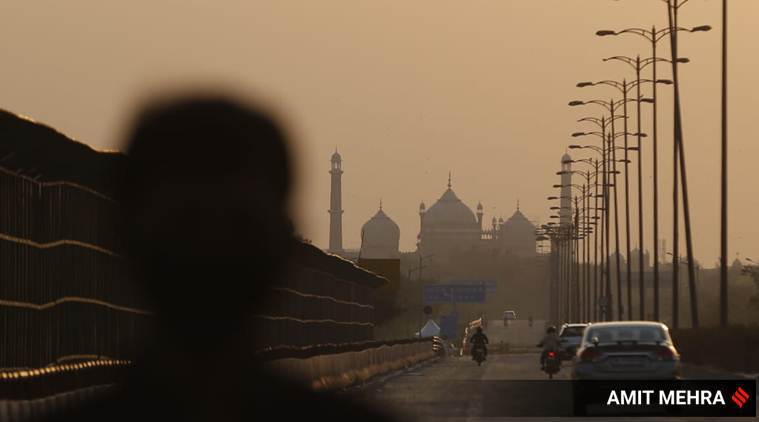 The Pandemic Uncertainty Index for coronavirus 2020, which captures the uncertainty related to the pandemic, is three times the size of uncertainty during the SARS outbreak. (File Photo/Representational)
The Pandemic Uncertainty Index for coronavirus 2020, which captures the uncertainty related to the pandemic, is three times the size of uncertainty during the SARS outbreak. (File Photo/Representational)
As we drove through the empty streets of Delhi, from Safdarjung Hospital to my home in the Institute of Economic Growth, the contrast between this journey on April 4 and the one I made on March 16 to get tested could not get any starker, both for myself and the wider society. For me, it was a huge sense of relief, gratitude to the well-wishers and all the caring staff, but for the economy at large, it is a time of doom and gloom. The Pandemic Uncertainty Index for coronavirus 2020, which captures the uncertainty related to the pandemic, is three times the size of uncertainty during the SARS outbreak.
For me, the story of COVID-19, so far, has been about extremities. First, in terms of our response to the spread of the virus, people and nations have either been casual or have taken extreme measures. For example, in countries like Italy and the UK, it was business-as-usual at first even when the pandemic was knocking on their doors. But now, several countries including India are completely locked down. The extreme response to the virus is reflected in the panicked reactions of individuals, evident in several actions which cannot be explained by rational thinking. I feel that our fear and panic has been disproportionate.
Maybe the news about fatalities in various countries and uncertainty about our medical preparedness have contributed to this panic. Let us fear, let us be careful, but let us not panic. As doctors and scientists have been saying, a majority of the cases will be no worse than the common flu. I am fortunate enough to be one of these. But somehow, in our desire to know about the disease, we have collected all the facts about how terrible it can be. While in the hospital, I was so scared that I would go to bed bracing myself for the worst-case scenario. After a week or so, I even asked the doctor to check why my nights have been relatively smooth. Yes, there will be complications, as all illnesses lead to, but most will overcome these. It is certainly not the case that once you are infected you will drop dead. It was nice to see the section on recoveries in The Sunday Express, which will go some way in restoring the balance between fear and hope.
Second, the way the virus seems to be affecting people is very different in terms of intensity and fatality. For many, it is no more than the common flu or even milder, but for many, it has proved fatal (even without existing medical conditions). This has created a difficult situation. Those with minor symptoms or with no symptoms can spread it very easily to the wider public, resulting in a very high overall mortality. Hence, it is important to exercise social responsibility and to self-isolate at the slightest hint of symptoms. But this cannot be a long term solution as isolation will affect the frontline workforce, and in some societies, isolation may not be feasible for the poorer sections. In this context, we need to test in large numbers. Tests have to be accessible and quick.
My experience with testing has not been great. When I first went to Ram Manohar Lohia Hospital to get tested, nearly 80-90 people were waiting in a small corridor, and it was a scary prospect. People were borrowing a pen and paper from each other. I am glad I got tested because my symptoms were not severe and I could have easily spread the disease. The lack of sufficient testing and targeted isolation has been mitigated to some extent by the total lockdown, but we will need to test more once we come out of the lockdown. We also need to have quicker reports, in my case the average has been 4-5 days. Hopefully, things have improved, as more and more labs are participating (including the safe drive through testing) and I sincerely hope we stay on this trajectory.
As various economists have been commenting, we have to look at the fatality and distress which the suspension of economic activities will induce. The current lockdown has slowed the spread, given the authorities time to bolster medical capabilities, contain the spread by contact-tracing and testing intensively. But sooner or later, we will come out of this lockdown, though we may remain in a partial lockdown for quite some time. We may have targeted lockdowns of certain geographical areas, once the distribution of Covid incidence is clearer. The sooner we move to this phase, the better. The economy has to keep running, even if at a low gear. Economies are like central heating systems, restarting them becomes difficult if you switch off the heating and let the house get very cold. Once we let economic activities resume (not just essential services), it will be important not to let panic dictate our lives.
My experience with the facilities at Safdarjung Hospital has been very good. The doctors, the nursing staff and other workers are superb. They have been working very hard in a difficult environment, but as cases grow and pressure on the system increases, they will be stretched beyond the limit. We must make sure they are not over-worked and they have the right equipment and environment to carry out their jobs.
I hope we take some lessons from this pandemic to ensure that our per capita health spending improves soon. Otherwise, we haven’t learnt anything.
The writer is professor of economics and director, Institute of Economic Growth, Delhi